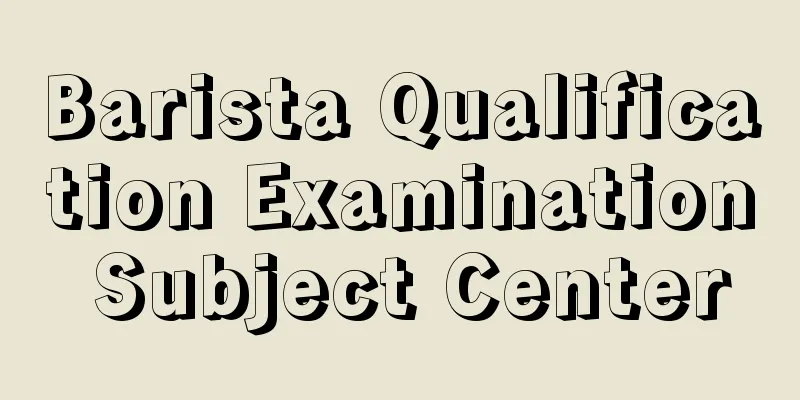Can coffee beans be brewed directly?

Overview of coffee bean brewing methods and discussion on direct brewingThere are many ways to brew coffee beans, the most common of which include filter hanging, French press and espresso machine. The filter hanging method filters the coffee grounds through a paper filter, which can effectively control the flavor concentration of the coffee; the French press allows the coffee beans to be in contact with hot water for a long time, which is suitable for people who like a strong taste; the espresso machine provides rich milk foam and strong flavor through high-pressure extraction. However, the direct brewing method of coffee beans has recently attracted attention. This method skips the grinding step of coffee beans and contacts the whole beans with hot water. The advantage of direct brewing is that it is simple to operate and can reduce the loss of coffee aroma during the grinding process, but it may also result in a rough and uneven taste of coffee. Introducing this new method requires weighing its possible advantages and disadvantages to determine its practical use in everyday coffee making. The impact of coffee bean type and grinding on brewing effectThere are many types of coffee beans, from Arabica to Robusta, each with its own unique flavor profile. Technical principles and feasibility analysis of direct brewing of coffee beansThe basic principle of direct brewing coffee beans is to contact the whole coffee bean with hot water without grinding. This method assumes that the longer soaking time can gradually release the flavor of the coffee bean into the water. In theory, the hot water can penetrate into the interior of the coffee bean and extract the flavor substances contained in it. In practice, direct brewing requires the use of sufficiently hot water to ensure effective flavor extraction. Since the outer shell of the coffee bean is relatively hard, water penetrates more slowly, which may result in an uneven extraction process, affecting the final taste and quality. Compared with traditional grinding methods, direct brewing may not fully extract the flavor of the beans. In addition, the coffee grounds produced during the brewing process may affect the clarity and taste of the drink. Although this method is simple and easy to implement, its actual effect still needs to be verified in practice to determine whether it can meet the taste requirements of different consumers. The advantages and potential drawbacks of direct brewingOne of the main advantages of brewing coffee beans directly is its simplicity. Users only need to contact whole coffee beans with hot water, without grinding and additional equipment, which saves preparation time and operation steps. This method is suitable for those who pursue a quick and convenient coffee making experience. In addition, omitting the grinding step can reduce the loss of aroma of coffee beans during the grinding process, allowing the coffee to better retain the original flavor of the beans. However, this method also has some potential disadvantages. Since the shell of the whole coffee bean is harder, it takes a long time for hot water to penetrate into the inside of the bean, which may lead to uneven flavor extraction and affect the integrity of the taste. Directly brewed coffee may also contain more coffee grounds, making the drink taste less pure, which may be a disadvantage for consumers who prefer a refreshing taste. Therefore, when using this method, it is necessary to weigh the convenience it brings with the possible loss of flavor. Practical application and feedback of direct brewing coffee beansIn actual applications, some coffee lovers have tried the method of brewing coffee beans directly. For example, in one experiment, whole coffee beans were directly brewed with hot water and the flavor was evaluated. The results showed that although this method can make coffee quickly, the taste is relatively simple and there are fine residues, which affects the overall drinking experience. In another case study, user feedback showed that direct brewing of coffee excels in convenience, especially for busy mornings. However, users generally believe that this method does not provide the same depth and richness of flavor as traditional ground coffee. Despite this, some consumers like its simplicity and speed and are willing to use this method in informal settings. These practical results suggest that direct brewing of coffee beans has utility in certain situations, but its flavor limitations still need to be considered when pursuing a premium coffee experience. Future improvements may focus on how to optimize brewing. Comprehensive Assessment and Future RecommendationsIn summary, the direct brewing method of coffee beans has obvious advantages in simplicity and speed, but its flavor performance has not yet reached the level of traditional brewing methods. Although this method can save time and reduce the number of steps, the final coffee taste may not be uniform and rich enough because the shell of the whole bean limits the effective flavor extraction. In view of the shortcomings of this method, it is recommended to consider using finer coffee bean crushing technology in future improvements to enhance the penetration of hot water into the beans and the extraction of flavor. In addition, it is possible to explore combining with other coffee making equipment, such as using pre-ground coffee beans for mixing, to balance convenience and flavor quality. For ordinary users, if they pursue a high-quality coffee experience, the traditional grinding and brewing method is still the best choice. For users who want to enjoy coffee in a fast and convenient scenario, direct brewing is still a viable alternative. When choosing a method, users should |
<<: How much is a pound of ordinary coffee beans?
>>: Liberica coffee beans in the world
Recommend
Where is the best place to learn coffee
Where is the best place to learn coffee Coffee is...
How to choose the grinding degree of coffee beans?
Choosing the grind size of coffee beans is one of...
Coffee latte art, exploring the meaning and charm behind it
Coffee latte art is not only a coffee making tech...
The method of grinding coffee beans into powder allows you to easily enjoy the aroma of coffee!
Coffee is a must-have drink for many people in th...
South African coffee beans: a journey of aroma that has attracted worldwide attention
South African coffee beans: a journey of aroma th...
American coffee beans hand brewing: rich and mellow, taste the essence of coffee
American coffee beans hand pour: taste the essenc...
Nestle coffee, the quality and experience behind the price
Nestle coffee has won the favor of consumers with...
Old Ipoh White Coffee, the charm of traditional Malaysian coffee
Old Ipoh White Coffee is one of the representativ...
Coffee bean planting process and tips
Coffee is one of the most popular drinks in the w...
What to do if coffee beans are too bitter
The Origin of Bitterness in Coffee Beans The bitt...
Do you know the best time for coffee in the morning?
Best coffee time in the morning Morning is the be...
How to grind coffee beans
Learn more about coffee bean types and characteri...
Explore the unknown, the endless variety and flavors of coffee beans
Abstract: This article explores the infinite myst...
Cassia seeds and coffee beans: Do they have the same effects?
Cassia seed and coffee beans are both common food...
Black coffee rankings, exploring the world's top ten black coffees
The top ten best black coffees in the world inclu...









